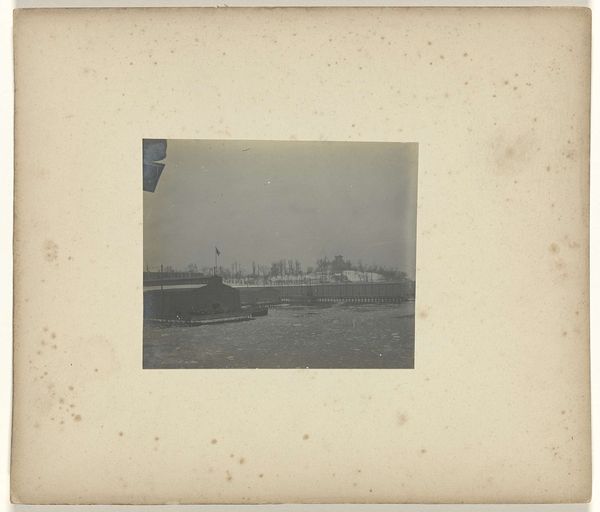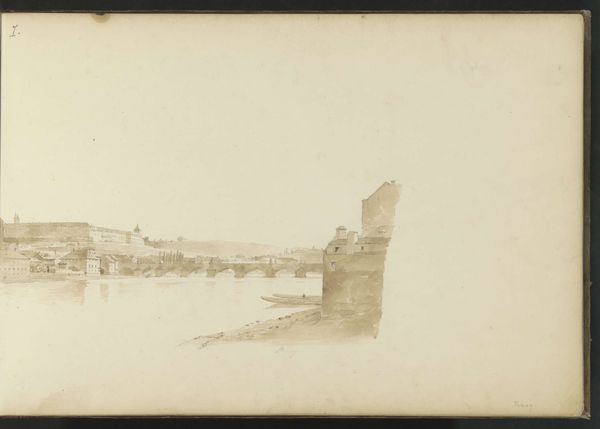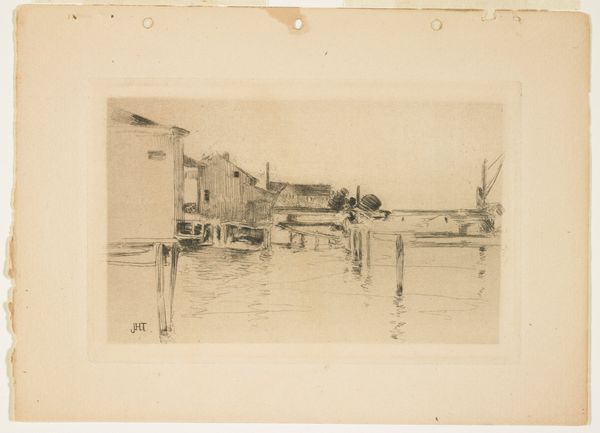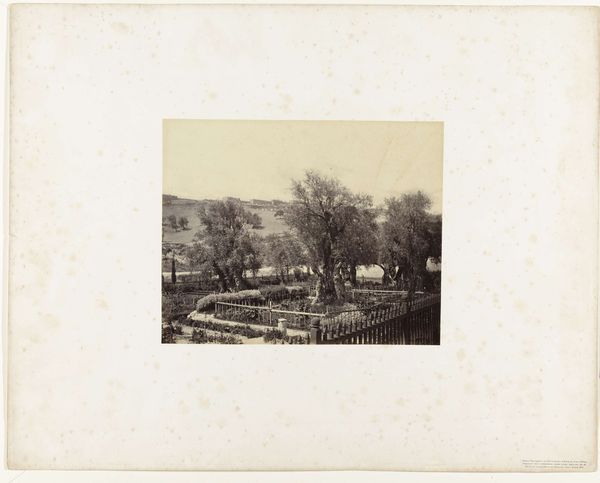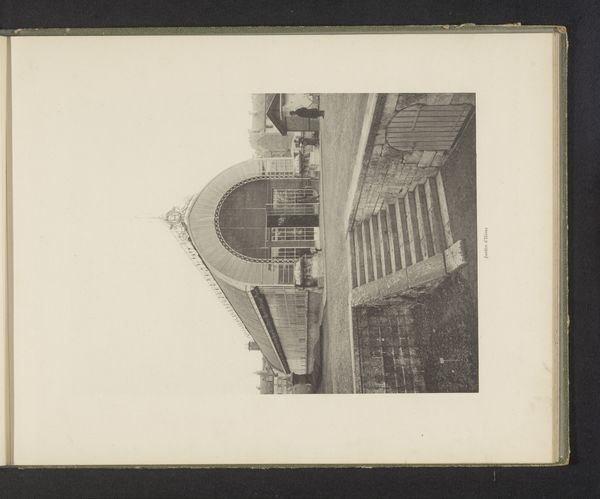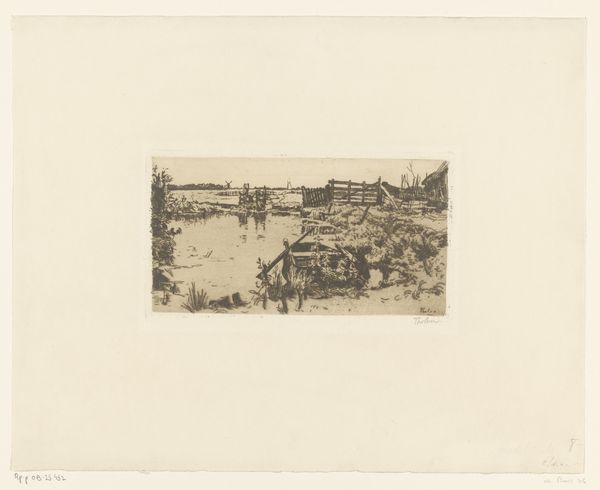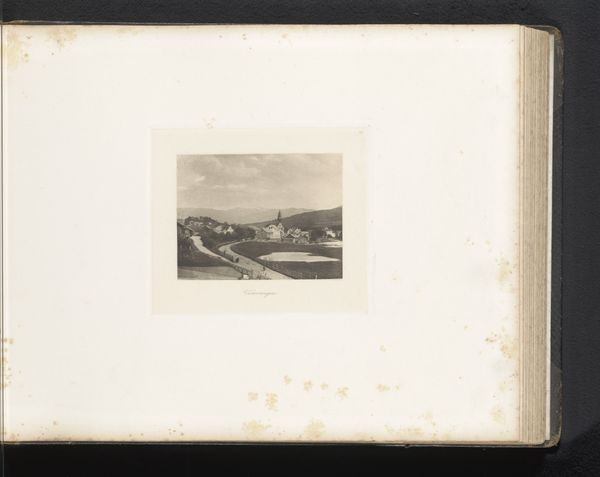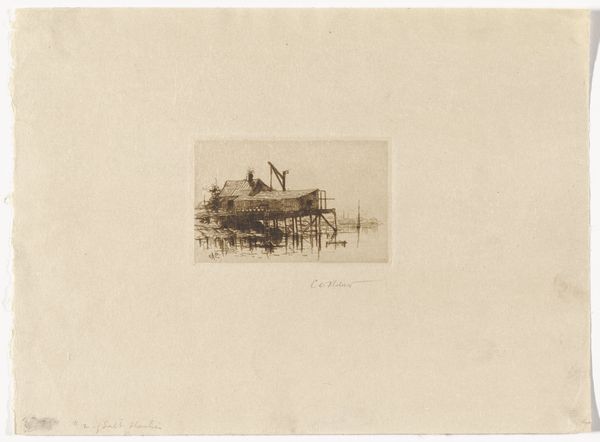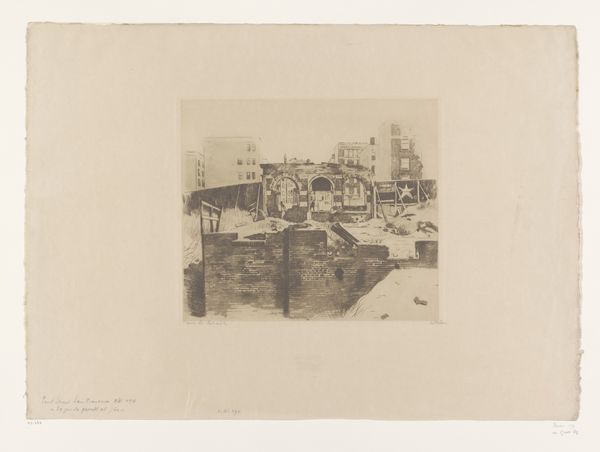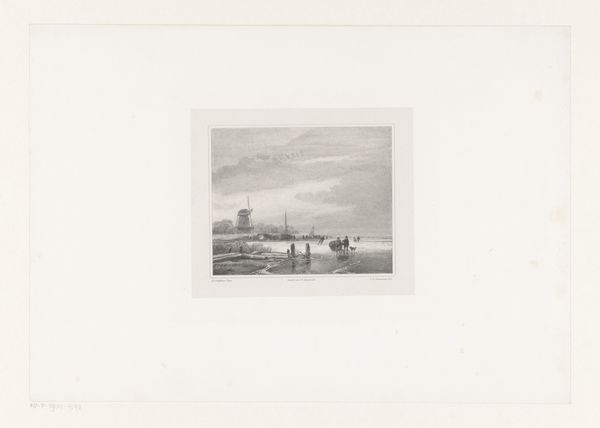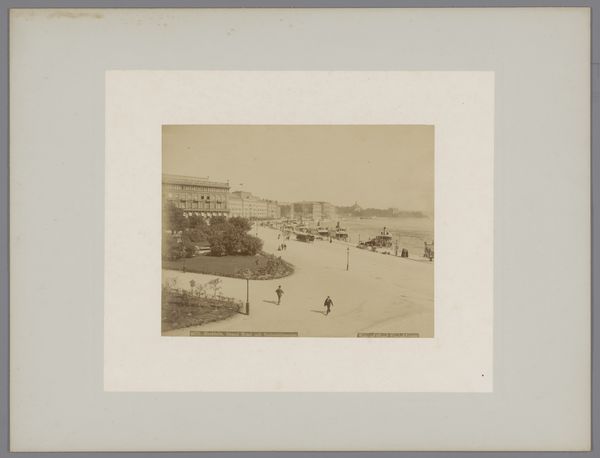
Waterbaan met bootjes op de wereldtentoonstelling in St. Louis (Louisiana Purchase Exposition), 1904 1904
0:00
0:00
photography, gelatin-silver-print
#
pictorialism
#
landscape
#
photography
#
gelatin-silver-print
#
realism
Dimensions: height 79 mm, width 105 mm
Copyright: Rijks Museum: Open Domain
Editor: This gelatin silver print, captured by Jan Schüller in 1904, is titled "Waterbaan met bootjes op de wereldtentoonstelling in St. Louis." The composition is quite interesting with the boats and the structure looming. What do you observe in terms of form and structure? Curator: The photograph offers a rather interesting study in contrasts. Note the deliberate layering; the eye is guided from the foreground water line towards the geometric scaffolding of the water ride, finally resting upon the building itself. Observe, also, the play of light and shadow. Do you perceive how it delineates form? Editor: I do. The way the light reflects on the water surface and casts shadows on the structures definitely accentuates their shapes. It’s almost like Schüller is emphasizing the artificiality of the scene within the natural element of the water. Curator: Precisely. Furthermore, examine the tonality – the subtle gradations in grey create depth and texture. The focus isn’t merely on documenting the event but in crafting a composition that balances realism with a softer, almost painterly, aesthetic. The placement of the boats adds to the formal elements within the captured space. Do you see how the diagonal orientation enhances movement? Editor: Yes, it disrupts the static horizontal lines of the architecture. I initially just saw an interesting snapshot of the World's Fair, but looking closer, I'm struck by how much formal consideration went into capturing this scene. Curator: Indeed, analyzing its composition opens the photograph up, not just as historical documentation, but as an exploration of form. It shows us that photography can have painterly concerns in terms of light and arrangement, regardless of the event shown. Editor: Thanks. I see this photo now from a completely new, visually analytical perspective.
Comments
No comments
Be the first to comment and join the conversation on the ultimate creative platform.
